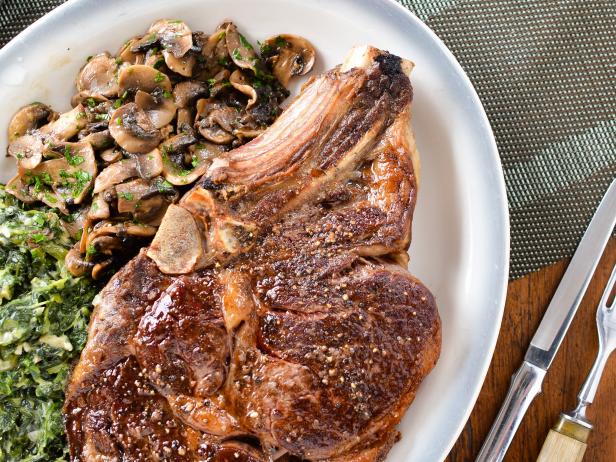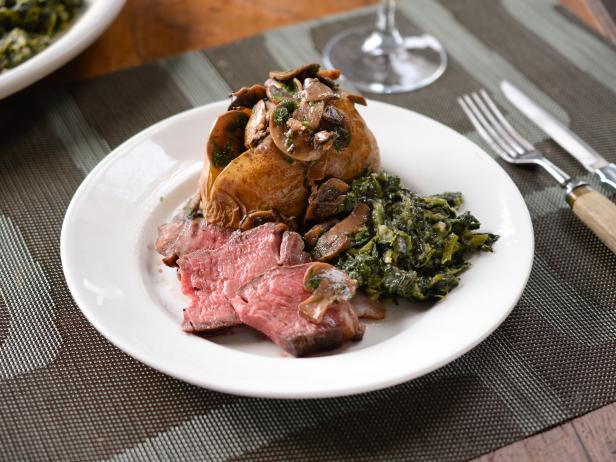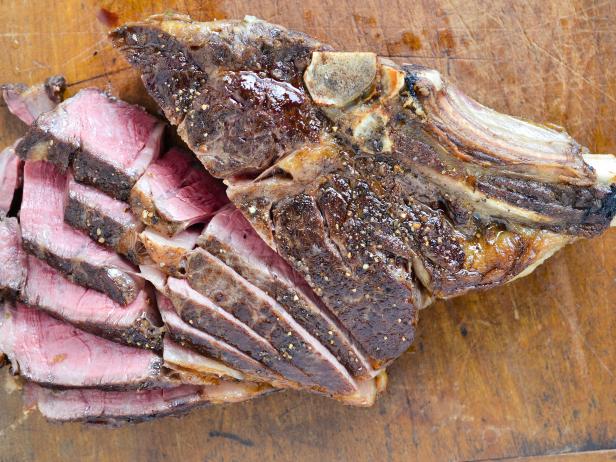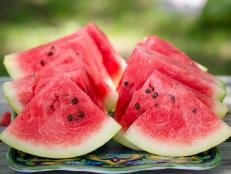Get to Know Your Meats and Stay in for Steakhouse Rib Eyes

Virginia Willis, 2014, Television Food Network, G.P. All Right Reserved
It’s a rite of passage to go to one of America’s great steakhouses. Dark knotty, wide wood; warm, well-polished brass; and banquettes upholstered in worn, creased leather set the stage.
When partnered with excellent food and excellent service, it’s an all-American experience. Our attraction to the scent of meat cooking on fire is basic; the wafting smoke seems to awaken some sort of primordial urge buried deep in the recesses of our carnivorous brains.
There’s not much heartier and more satisfying in terms of comfort food than a meaty, perfectly charred steak topped with mushrooms and served with a baked potato and creamed spinach. This is how the West was won — or at least west Wall Street.

Virginia Willis, 2014, Television Food Network, G.P. All Right Reserved
Life occasionally calls for a thick, juicy steak. Those special times might be celebrating something such as a big promotion, a graduation or an anniversary. The celebrations often come with a big price tag, too. Down-home comfort steakhouse-style is a real cause for celebration, because you can do it in the comfort of your own home. No rude waiters, no dings in the car due to the careless teenager in valet and no eye-popping bill that costs as much as a house payment.
Get the Recipe: Steakhouse Rib Eyes with Creamed Spinach
How to achieve steakhouse success in your kitchen? There are so many choices at the meat counter; which one should you choose? With all four-legged mammals, the parts that get the most exercise are the toughest. They also have the most flavor but need long, slow cooking to become tender.
Conversely, the muscles that get the least exercise are the tenderest and respond well to quick cooking. These are the steaks. The premium cuts most often used in steakhouses are rib eye, sirloin and tenderloin.

Virginia Willis, 2014, Television Food Network, G.P. All Right Reserved
Let’s look at a little anatomy. There are two muscles called the loin, one on either side of the backbone, that stretch from the shoulder blades to the hip. The loin muscle is known as the rib eye in the rib area, and as the sirloin closer to the hip. The tenderloin is the muscle that rests below the loin. My personal favorite is the rib eye. It’s highly marbled and packed with flavor.
You may have also seen the USDA stamp on your meat, a purplish-blue insignia made of food-safe ink stamped directly on the beef. Young beef is categorized as prime, choice, select or standard. (The terms commercial, utility, cutter and canner refer to meat from older cattle. I don’t advocate eating anything less than select.)
Prime, the most-marbled meat, is not readily available at your typical local grocery store and is primarily sold to fancy steakhouses, restaurants and gourmet markets. It’s got a pretty prime price tag, too. Search it out. This is the good stuff.
Choice is the grade most widely available. Choice is still a very high grade, but not as marbled. It’s a perfectly acceptable grade for steaks. The lowest overall USDA grade within the realm of acceptable is select.
Select is a leaner and healthier but tougher cut of beef that has been gaining in popularity. Select has a fat content similar to grass-fed beef and is excellent prepared by long, slow cooking but doesn’t really shine when it comes to quick-cooking steaks. For best results, stick to prime or choice for down-home comfort steakhouse-style.
Bon Appétit, Y’all!
Related Links:
Georgia-born, French-trained Chef Virginia Willis has cooked lapin Normandie with Julia Child in France, prepared lunch for President Clinton and harvested capers in the shadow of a smoldering volcano in Sicily, but it all started in her grandmother’s country kitchen. A Southern food authority, she is the author of Bon Appétit, Y’all and Basic to Brilliant, Y’all, among others. Follow her continuing exploits at VirginiaWillis.com.

































